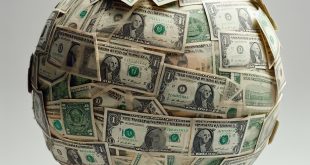As of July 8, 2025, at 19:13 GMT+3, the spot gold price stands at $3,297.175 per ounce, down 1.18% daily, reflecting a short-term correction from a previous close of $3,336.44. Over longer periods, gold has shown significant strength, with a 23.84% increase over six months, 25.60% year-to-date, and 37.98% over the past year. Silver, trading at approximately $36.53 per ounce, has also gained 26% year-to-date, with the gold-to-silver ratio at 90.7:1, indicating silver’s relative value compared to its 25-year average of 66:1.
Key Drivers of Price Movements
Persistent inflation, with global consumer price indices rising steadily, drives investor interest in precious metals as hedges against value erosion. Geopolitical tensions, including fragile U.S.-China trade talks and regional conflicts involving Japan and South Korea, bolster gold’s safe-haven appeal. Silver’s price is supported by its dual role as a precious and industrial metal, particularly in solar energy technologies, amid global renewable energy growth. Despite a stronger U.S. dollar exerting downward pressure, gold’s yearly gain of 41.28% reflects robust demand.
Market sentiment remains mixed. Technical indicators show neutral oscillators and moving averages, with gold testing resistance near $3,360 and support at $3,245. Forecasts suggest gold could reach $3,560.59–$3,925.39 by year-end, with some predicting $4,000 by mid-2026, driven by central bank buying and trade uncertainties. Silver’s supply-demand imbalance, projected to tighten by 2026, supports a bullish outlook.
Implications for Global Markets
The surge in gold and silver prices reflects a shift toward tangible assets amid economic volatility. Central banks, particularly in BRICS nations, are increasing gold reserves to diversify from fiat currencies, with 900 tonnes of purchases expected in 2025. Proposed U.S. tariffs (10%–145%) could disrupt metal imports, potentially driving prices higher. The 17th BRICS Summit’s discussions on a precious metals exchange may further boost demand by challenging Western price benchmarks.
Addressing Counterarguments
Some argue that improved U.S.-China trade relations, contributing to gold’s recent 1.77% monthly decline, could reduce safe-haven demand. However, trade talks remain precarious, and any setbacks could reignite buying. Short-term corrections, with gold’s daily range of $3,287.11–$3,345.955, are overshadowed by long-term drivers like central bank purchases and silver’s industrial demand. The 10-year U.S. Treasury note’s yield fluctuations signal ongoing uncertainty, supporting precious metals.
Practical Advice for Policymakers
To stabilize markets, policymakers should provide clear monetary policy guidance, particularly on interest rates, to temper inflation expectations. Stable trade agreements can mitigate supply chain disruptions, reducing speculative price spikes. For investors, allocating 5–10% of portfolios to gold or silver, via physical assets or ETFs, offers a hedge against volatility. Monitoring technical levels, such as gold’s resistance at $3,388 or silver’s support above $35, can guide investment timing.
Gold and silver prices in FY2025 reflect strong demand driven by inflation, geopolitical risks, and industrial needs. Despite short-term corrections, with gold down 1.18% daily and 1.29% over five days, long-term trends remain bullish, supported by central bank buying and supply constraints. Policymakers and investors must navigate these dynamics strategically to balance economic stability and investment opportunities.

 Noor Trends News, Technical Analysis, Educational Tools and Recommendations
Noor Trends News, Technical Analysis, Educational Tools and Recommendations




